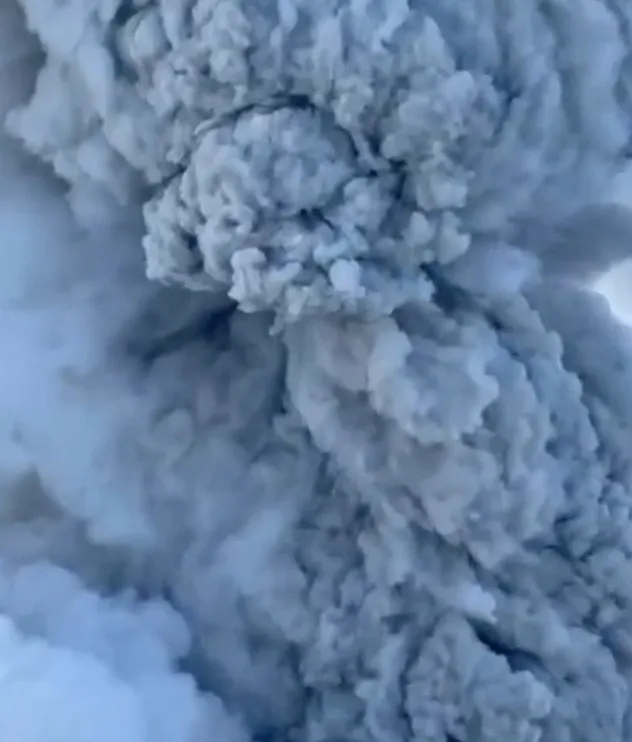What Prompted the Highest Aviation Alert in Russia's Far East Due to Volcanic Eruption?

Synopsis
Key Takeaways
- The aviation alert for Klyuchevskoy Volcano has escalated to red.
- Intense eruptive activity is being monitored.
- Potential ash explosions pose risks to aircraft.
- A dam failure has raised concerns about mudflows.
- Tourists in the region may be at risk due to volcanic activity.
Vladivostok, Aug 7 (NationPress) The aviation alert code for Klyuchevskoy Volcano in the Kamchatka Peninsula of Russia's Far East has been escalated from orange to red due to heightened eruptive activity, as reported by local officials on Thursday.
According to a statement shared on its Telegram channel, the Kamchatka Volcanic Eruption Response Team (KVERT) of the Institute of Volcanology and Seismology at the Far Eastern Branch of the Russian Academy of Sciences, a summit explosive-effusive eruption is currently in progress. Satellite imagery indicates that ash is rising to approximately 9.5 km above sea level and an ash plume is drifting about 141 km east-southeast of the volcano.
KVERT has cautioned that ash explosions reaching up to 10 km above sea level may occur without warning, posing a threat to international and low-flying aircraft in the vicinity, as reported by Xinhua.
At around 4,754 metres, Klyuchevskoy is recognized as the tallest active volcano in Eurasia.
Summit eruptions have intensified following a significant 8.8 magnitude earthquake that struck off the Kamchatka Peninsula last week.
On August 6, a dam near the Klyuchevskoy Volcano was destroyed, raising alarms about possible mudflows and transportation disruptions in the area.
Field investigations conducted from July 30 to August 2 near the Studenaya River uncovered that the dam, built in 2023 to separate the river's channels, had collapsed, allowing water to flow unrestricted.
Scientists attributed the dam's failure to increased volcanic activity triggered by the powerful earthquake that occurred on July 30.
Lava from the Klyuchevskoy volcano is currently flowing toward the Bogdanovich Glacier, accelerating ice melt. This surge of meltwater cascades down the slopes, resulting in large-scale mud and debris flows.
Experts warn that should these flows continue to grow, they will pose a direct risk to tourists in the Tolbachinsky Valley.









